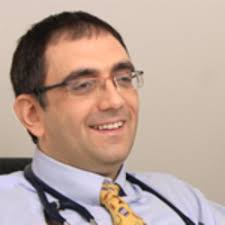Healthcare with Confidence
Below you will find information about bone cancer treatment in Israel, best oncologists and Israeli hospitals.
Bone cancer is a malignant growth and division of cells of the bone. Bone tumors may be benign (not cancerous) or malignant (cancerous).
Israeli medicine is always in search and discovery of new treatment methods, so here you can get a reliable doctor consultation or one of the best Israeli doctor second opinion for further treatment of your medical diagnosis.
You will be advised and treated by a doctor who focus on treatment of your bone disease. Doctors are heads of specialized departments of one of the best hospitals in Israel.
Leading Israeli doctors for bone cancer treatment
 Prof. Ofer Merimsky – Head of Soft tissues and Bones Oncology Department at the Suraski (Ihilov) Medical Center, Tel Aviv, Israel. Expert in clinical oncology and radiosurgery, treatment of soft tissue and bone sarcoma.
Prof. Ofer Merimsky – Head of Soft tissues and Bones Oncology Department at the Suraski (Ihilov) Medical Center, Tel Aviv, Israel. Expert in clinical oncology and radiosurgery, treatment of soft tissue and bone sarcoma.
Prof. Merimsky is in the Forbes list of the best Israeli doctors.

Prof. Ihuda Kolander – Head of the Onco-orthopedics Department, Tel Aviv Medical Center “Sourasky” (Ichilov). Leading Israeli expert in the treatment of bone cancer.

Dr. Dror Levin – Head of the pediatric Hemato-Oncology Unit at Sourasky Hospital (Ichilov), Tel Aviv. Coordinator of oncology treatment in bone and soft tissue cancer in children. Senior pediatrician at the Pediatric Hospital. Deputy Director of the Hematology Oncology Department at Dana Children’s Hospital.
We will promptly coordinate doctor consultation and medical treatment in Israel
Diagnosis and treatment of sarcoma bone cancer
Bone cancer occurs less often than other types of cancer and usually occurs in young adults. Osteosarcoma is the most common tumor and diagnosed mainly in adolescents. Paget’s disease increases the risk of bone cancer, so the disease often occurs in people over the age of 60. Ewing’s sarcoma occurs among young people aged 10 to 20 years.
Causes of bone cancer are not known, but there are factors that increase the risk of diseases such as exposure to radiation, various bone diseases, chemotherapy.
The most common site of primary tumor growth hip and thigh. Between malignant tumors are less common characteristics. Osteosarcoma is the most common and develops in the bone. Chondrosarcoma in thin tissues that constitute cartilage. Less likely to develop primary tumor Ewing’s sarcoma. This increase of soft tissue of the pelvis, ribs, shoulder and hip. Fibrosarcoma tumor is primary in the connective tissue of the bone. Its growth is characterized by an increase in fibroblasts.
Secondary tumors. Since, by definition, benign tumors do not metastasize, all independent secondary tumors are malignant tumors. Malignant tumors penetrate the bones from other organs affected by cancer. This may be prostate cancer metastases, breast cancer and lung cancer.
Bone cancer symptoms vary depending on the size and location of the tumor. The most common symptom is pain, increasing with time and the growth of the tumor. Many patients do not feel any symptoms other than pain. Other symptoms may include weight loss, anemia, fatigue, unexplained fractures. Pain is usually worse at night. Swelling appears only when a very large tumor. When the tumor extends to the joint, the difficulties begin with the movement.
Diagnostics
The initial diagnosis of bone cancer is assumed on the basis of symptoms and general symptoms. The final diagnosis is made after a bone marrow biopsy and X-ray studies.
X-rays is the easiest and most important method for the detection of bone cancer, as well as determining primary or secondary tumors.
Bone scanning. Bone scan test with high sensitivity to diagnose cancer cells at an earlier stage than X-rays. Intravenously administered in a very small amount of material with low radioactivity. Unhealthy bones absorb a greater amount of radioactive material than healthy, so that the scanner can detect abnormal areas of the body and emphasize them to the image.
If the preliminary tests (X-rays, bone scans and blood tests) indicate the existence of reasonable suspicion of bone cancer, doctor may refer the patient to an additional diagnosis:
Computed tomography. This is a more complex form of x-ray studies, that creates a three-dimensional image of the internal body part. Scanning is painless, but lasts longer than x-rays (10-30 minutes). CT uses radiation in a small amount, so the likelihood of damage to the body is very low.
Magnetic resonance imaging (MRI). This test is similar to CT, but using a magnetic field instead of X-rays for imaging a cross section of the body.
In order to obtain an accurate diagnosis, biopsy tissue is performed after Imaging.
Needle biopsy. The sample will be sent for microscopic examination to determine the tumor type. Sometimes, especially in children, a biopsy is performed under general anesthesia.
Open biopsy. This is a small operation under general anesthesia to remove a small piece of bone, under general anesthesia. Open biopsy is performed in cases when you can not punch biopsy.
Bone cancer management
Treatment of bone cancer depends on the type of cancer. There are several types of treatment:
Chemotherapy and radiation therapy. Can be very effective in certain types of cancer (e.g. Ewing sarcoma), but it may be useless for other types (e.g., chondrosarcoma).
Focused ultrasound treatment. May be effective in relieving pain caused by malignant tumors (primary and secondary) and benign tumors.
Medications. One of the main problems of bone cancer is bone loss and osteoporosis. There are drugs that increase bone strength. Other drugs are designed to relieve pain.
Surgery. Sometimes cancer treatment means a partial or complete ablation of one or more limbs affected by cancer. Partial amputation is to remove only the infected bone cancer. In some cases a bone implant or synthetic implant. In the case of complete amputation prosthesis can be used.
Immunotherapy. Treatment with drugs that activate immune system for killing cancer cells.
Cure the disease prognosis depends largely on the type of cancer, its location and extent, but in general it can be said that basically benign tumors have a high cure rate (although the different types of benign tumors that can develop into malignant), and local malignant tumors (no metastasis).



